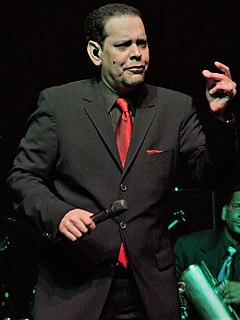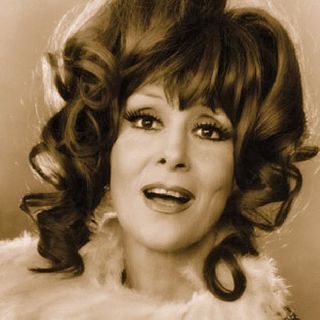This article needs additional citations for verification .(March 2019) |
| Vuelvo a vivir, vuelvo a cantar | |
|---|---|
Release date |
|
| Country | Argentina |
| Language | Spanish |
Vuelvo a vivir, vuelvo a cantar is a 1971 Argentine film.
This article needs additional citations for verification .(March 2019) |
| Vuelvo a vivir, vuelvo a cantar | |
|---|---|
Release date |
|
| Country | Argentina |
| Language | Spanish |
Vuelvo a vivir, vuelvo a cantar is a 1971 Argentine film.
| | This section is empty. You can help by adding to it. (July 2010) |
A cantar de gesta is the Spanish equivalent of the Old French medieval chanson de geste or "songs of heroic deeds".

Fernando Villalona, the first artist named "El Mayimbe", is a Dominican merengue singer who began singing in the early 1970s, his popularity started to grow by the late 1970s and has not declined ever since.

Illapu are a Chilean folk and Andean musical ensemble that was formed in 1971 in Antofagasta, in northern Chile, by the brothers José Miguel, Jaime, Andrés and Roberto Márquez Bugueño. A later addition to the group was Osvaldo Torres.

José A(gustín) Ferreyra, popularly known as "Negro Ferreyra", was an early Argentine film director, screenwriter and film producer. He was also sometimes credited as production designer.

Julio Saraceni was a prolific Argentine film director whose career in the Cinema of Argentina as a movie director spanned six decades.

Fernando Siro was an Argentine film actor, film director and screenwriter.
Lydia Rodríguez Fernández, better known as Lydia, is a Spanish pop singer.

Ansia de Amar is the title of a studio album by Mexican Norteño-Sax Conjunto Primavera released on April 3, 2001. This album became their second number-one hit on the Billboard Top Latin Albums chart. Finally, this is the first album without re-recordings since Amigo mesero of 1994, because the next albums until Morir de Amor have re-recordings. This album was the first of drummer Daniel Martinez, after the departure of Adán Huerta in 2000.

"Vuelvo" is a pop rock and alternative rock song recorded by Beto Cuevas, Chilean singer and ex member of the internationally successful and Grammy-winning band La Ley and the first single from his first solo studio album, Miedo Escenico.

Fahrenheit was a hard rock band from Santiago, Chile, deeply influenced by 1980s and '70s rock artists such as Aerosmith, Mötley Crüe and Skid Row. ºFahrenheit were well known in the Latin-American rock scene for their intense on-stage performance, energetic sound and guitar solos.

Shaila is the debut studio album by Shaila Dúrcal. It was released in 2004.

Ángel Gregorio Villoldo Arroyo was an Argentine musician and one of the pioneers of tango music. He was lyricist, composer, and one of the major singers of the era. He is also known by the pseudonyms A. Gregorio, Fray Pimiento, Gregorio Giménez, Angel Arroyo, and Mario Reguero. Villoldo transformed the Spanish tanguillos, the cuplés, and the habaneras, turning the continental genres into native Argentinian rhythms.

Graziosa Maggi, better known as Diana Maggi, was an Italian-born Argentine film, television, radio, and stage actress who was known for starring in the 1950 film Campeón a la fuerza.
Anna Saeki is a singer with Moon Music. She was born in Asahikawa, Hokkaidō.
Antonio Ber Ciani was an Argentine actor and film director. He is known for films such as Don Bildigerno de Pago Milagro.
Los Guardianes del Amor is a Mexican band formed in 1992 and managed David Alberto Uribe Roman. They are the Grupero act with the most nominations for Latin Grammy Award for Best Grupero Album with five, but have never won the award. The band's five members are Arturo Rodriguez, Oscar Saúl Cervantes, Daniel Poplawsky, Pablo Calderón and Ernesto Gracia.

"Vuelvo a verte" is a song recorded by the Spanish singer-songwriters Malú featuring Pablo Alborán. The song was released in November 2012 and peaked at number 1 on the Spanish Singles Chart in March 2013.

Julia Trzenko better known as Julia Zenko, is an Argentine singer and actress.
El derecho de vivir en paz is the sixth official single released by Chilean singer-songwriter Víctor Jara as a solo artist. It was written by Jara in 1969, as he worked in the "Vietrock" play by Megan Terry. The song was released in 1971 by the Jota Jota label and was included in the El derecho de vivir en paz album, released later that year.